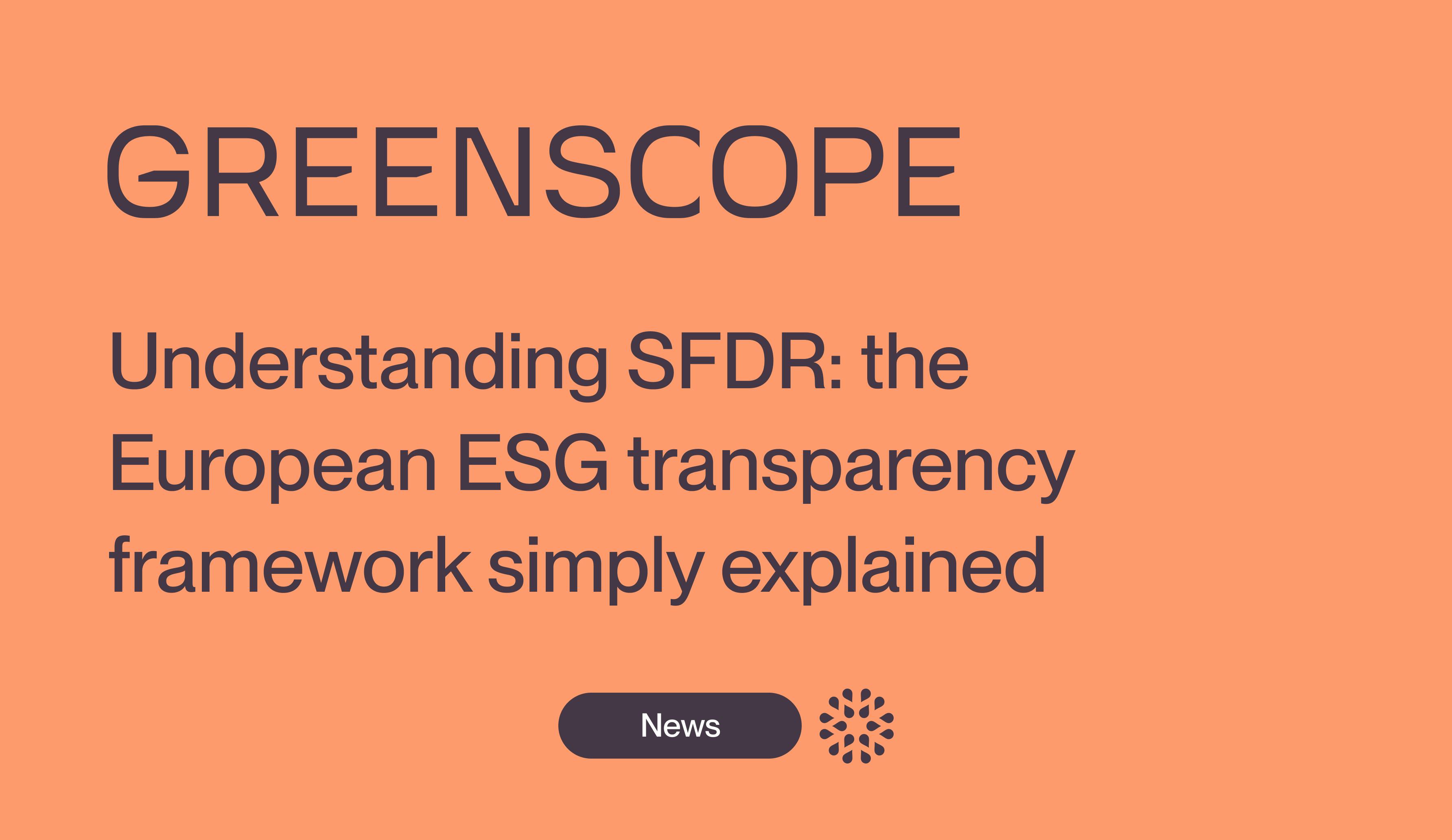Everything you need to know about the GRI sector standards for financial services
Discover the new GRI Sector Standards for banking, capital markets, and insurance

In spring 2025, the Global Reporting Initiative (GRI) launched a public consultation on three draft sector standards for the banking, capital markets, and insurance sectors. The final publication is expected in the second quarter of 2026. This article explores the benefits of using these standards for your ESG reporting and outlines the main disclosure requirements.
GRI standards: background and definition
The Global Reporting Initiative (GRI) is an independent international organisation founded in 1997 that developed a global framework for sustainability (ESG) reporting. Its purpose is to help private and public organisations measure and communicate their ESG impacts in a way that is both transparent and comparable.
💡 Note : this set of standards is now one of the world’s most widely used references for structuring and ensuring the credibility of ESG reports.
The GRI has developed three types of standards, structured in a modular way so that all organisations, regardless of size or sector, can use them:
- Universal standards (GRI Universal Standards)
These must be applied by any organisation using GRI standards for ESG reporting. They cover the basics of reporting under GRI (GRI 1), general disclosures about the organisation (GRI 2), and the identification of significant impacts through a materiality assessment (GRI 3)
- Topic standards (GRI Topic Standards)
These focus on specific issues (e.g. economy, environment, social matters). Organisations only apply the topic standards relevant to their material impacts
💡 Note : an issue is considered material if it is significant due to its impacts on people, the environment, or the economy, and if it also affects stakeholders (employees, clients, investors, etc.).
- Sector standards (GRI Sector Standards)
These are designed for sectors where ESG issues are particularly significant. They provide organisations in those sectors with a list of the most likely material topics and the related disclosure requirements.
🔎 Focus : GRI aims to develop sector standards for 40 industries. To date, four have been published for oil & gas (GRI 11), coal (GRI 12), agriculture, aquaculture and fishing (GRI 13), and mining (GRI 14).
GRI sector standards for financial services: what’s at stake?
Financial services act as catalysts for economic activity across all sectors. They support growth by providing credit, investment, insurance, and payment services.
As intermediaries with significant influence over their clients, financial institutions are uniquely positioned to encourage sectors and companies - especially those facing major ESG challenges- to manage their impacts on the economy, environment, and society.
On one hand, they can mitigate negative impacts by encouraging institutional clients and investee companies to adopt more responsible practices. On the other, they can voluntarily direct capital towards activities that generate positive impacts.
Against this backdrop, the GRI sector standards aim to provide financial services organisations with a structured roadmap to identify, manage, and report on their sector’s most significant ESG impacts. In practice, they represent the first attempt at a comprehensive framework to evaluate the ESG footprint of the financial services industry.
GRI sector standards for Financial Services: key disclosure requirements
Three sector standards (for banking, capital markets, and insurance) are currently under development. During the public consultation held from 5 March to 31 May 2025, exposure drafts were released for each.
💡 Note: according to GRI’s latest updates, the final versions of these sector standards should be approved and published in Q2 2026.
These standards identify the most likely material topics for the three subsectors, together with associated disclosure requirements.
⚠️ Important : using a sector standard does not replace the organisation’s own materiality assessment required under GRI 3. The aim is to guide organisations by highlighting the most likely material topics in their sector, essentially acting as a compass to ensure that no key issue is overlooked
Not all “likely material” topics will apply to every organisation. However, if an organisation decides not to treat a listed topic as material, it must explain why.
🏦 Banking sector
The banking sector standard covers both direct impacts (from banks’ own operations) and indirect impacts (linked to financed, insured, or invested activities).
According to the Banking sector Standard – exposure draft (Banking Sector Standard - Exposure draft), the key likely material topics and disclosure requirements are:
Likely material topics | Disclosure requirements |
|---|---|
Financial access and inclusion | Policies, practices, and outcomes regarding access to financial products and services for vulnerable populations, SMEs, and underserved communities |
Impacts of lending and investments on climate | Financed GHG emissions (by asset type and sector), calculation methodologies, emission reduction targets, and progress achieved |
Energy transition and high-carbon sectors | Financing/exclusion policies for high-carbon sectors (coal, oil, gas), exposures, and transition plans |
Human rights and social impacts in the financing value chain | Processes to identify, prevent, and mitigate human rights impacts linked to financing and investments |
Ethics and responsible conduct | Anti-corruption, anti-money laundering, and counter-terrorism financing policies, internal control, and compliance mechanisms |
Data privacy and protection | Number of data breach incidents, cybersecurity policies and measures |
Customer relations and pricing practices | Pricing policies (fees, credit terms), complaints management, and dispute resolution mechanisms |
Secteur des marchés de capitaux
This standard applies to organisations operating in capital markets, notably asset owners, asset managers, wealth managers, and investment advisors.
According to the Capital Markets Sector Standard – Exposure Draft (Capital Markets Sector Standard - Exposure Draft), the likely material topics and disclosure requirements include:
Likely material topics | Disclosure requirements |
|---|---|
ESG integration in investment decisions | Policies and methodologies for assessing ESG impacts in financial products and services |
Transparency of financial products | Classification criteria for financial products and proportion of aligned assets/products |
Governance and stewardship | Shareholder engagement, voting practices, and dialogue with investee companies |
Climate impacts and financed emissions from investments | GHG emissions linked to portfolios, methodologies for assessment |
Communication and marketing practices | Measures to avoid misleading claims (greenwashing), internal controls to ensure transparency |
Insur
This standard applies to life and non-life insurers, reinsurers, and insurance intermediaries (agents and brokers).
It covers both direct impacts (operations, governance, client practices) and indirect impacts (covered risks, investments, coverage, and exclusion policies).
According to the Insurance Sector Standard - Exposure Draft (Insurance Sector Standard - Exposure Draft), the likely material topics and disclosure requirements include:
Likely material topics | Disclosure requirements |
|---|---|
Accessibility and inclusion | Policies to improve access to insurance products for vulnerable and low-income groups; share of contracts accessible to these populations |
Products and services addressing climate risks | Climate adaptation strategies in products offered, specific initiatives implemented |
ESG risk management in investments | Value and proportion of ESG-aligned investments, exclusion and stewardship policies |
Contract terms and claims handling | Average claims settlement times, litigation rates, and recourse mechanisms |
Pricing and exclusions | How ESG criteria (particularly climate) influence pricing and exclusions, and the impact on product accessibility |
How to apply the GRI sector standards for financial services in practice
While awaiting the final versions, organisations can already prepare by gathering the information they will need to disclose in their reporting.
Here are the main steps to structure ESG reporting under the GRI sector standards for financial services:
Identify the organisation’s material issues through a materiality assessment
Banks, capital market players, and insurers must first identify their own material issues through an internal assessment under GRI 3, using stakeholder consultation, impact studies, risk analysis, etc.
Use the applicable sector standard
The sector standard helps verify that the impacts identified align with the issues listed for the sector. If some listed topics are not considered material, the organisation must explain why
Report using relevant topic and sector standards
For each material issue, the organisation must then apply the corresponding GRI Topic Standards to structure its reporting and disclosures
Example: For reporting GHG emissions, apply GRI 305
If no Topic Standard exists (as is currently the case for “ESG risk management in investments” in the insurance sector), the organisation should rely on the disclosure requirements set out in the relevant Sector Standard.
Learn more
- GRI website
- Sector Program
- Sector Standards Project for Financial Services
- Exposure drafts : secteur bancaire
- Exposure drafts : marchés de capitaux
- Exposure drafts : assurance
Our latest articles

CSR News - December 2025
Discover key developments: ongoing projects, standards updates, new official documents.

EDCI - Understanding the ESG Data Convergence Initiative to harmonize ESG reporting in Private Equity
Simplify and standardize your ESG data with EDCI.

Understanding SFDR: The European ESG transparency framework made simple
Understanding SFDR means understanding what structures sustainable finance in Europe. Requirements, tools, impacts: let's break it down.

CSR News - November 2025
Discover key developments: ongoing projects, standards updates, new official documents.



